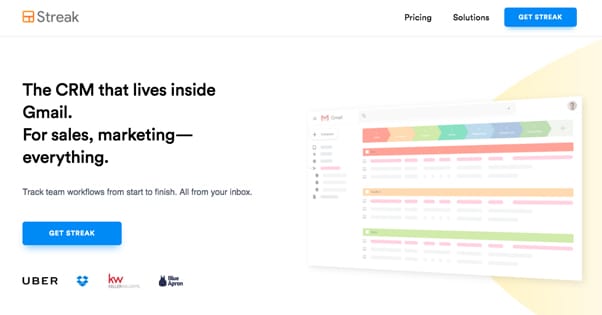20+ Email Management Tools for Windows and Mac
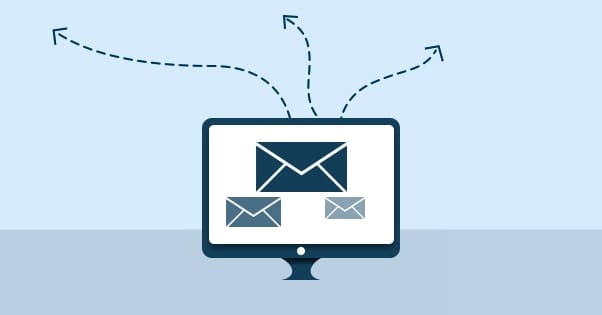
Email management is in some ways one of the most critical elements to workplace success. Everyone, from the CEO (or their secretary) down to the custodial staff has email, and most of those people have to deal with it for business-critical transactions. Yet at the same time, efficiently dealing with volumes of email every day is the only way to have time to actually do your job. It’s so easy to be swamped in an effort to hit Inbox Zero. If you can’t let go of the concept and just deal with some things later, you need a good email manager that can, for example, let you snooze emails to address later.
I’ve put together a list of email management programs you can investigate below. All of them are perfectly sufficient at doing what they do, but they have a variety of different features. If you’re looking for something in particular, make sure to check out the feature list – and price point – for a tool before signing up.
I considered dividing these up by platform, to indicate which ones are for OSX and which are for Windows, but frankly almost every app is cross-platform these days. You simply leave too many customers on the table if you don’t develop for both options. Instead, I’ve flagged the few exclusives I’ve found in their descriptions.
eM Client
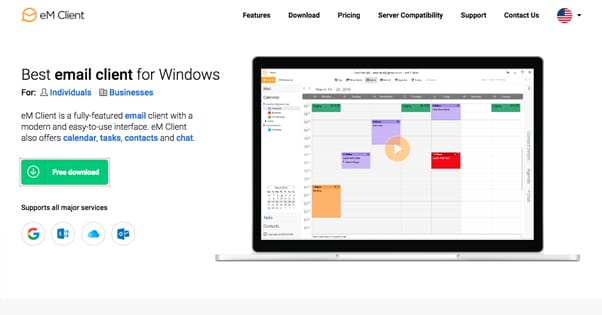
A Windows-only email management client that has as many features as they could cram into it. Not only do they handle typical email stuff, they do calendar management, task management, contacts, and even have a chat client built-in. Their free version is relatively full featured as well; you can’t use it for commercial use or with more than two email accounts for free, but the paid version is only $50 if you want to alleviate those limitations.
SendInBlue
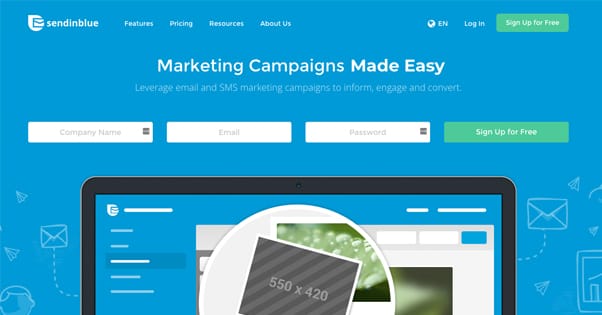
A major email manager, this app does a little bit of everything. They have a drag and drop editor for designing email campaigns, along with a template galley to give you a place to start. Emails are mobile friendly by default and can be personalized for the recipients. They have open tracking, customer management, and integrations with a bunch of other apps as well.
Agile

Agile is a brand with a bunch of different marketing apps. One of them is this email marketing app. Like most others on this list, it has a bunch of custom templates and personalization options for them. It also scores incoming leads and sorts them into categories according to how best you can approach them with further messaging. You even get split testing and autoresponders. Pricing is even very reasonable, with the enterprise-level plan only clocking in at $50 per month.
Mozilla Thunderbird
Thunderbird is a fairly simple email client that works on both platforms. Developed by the same people behind Firefox and other similar apps, it’s easy to get started. Thunderbird has some basic security options, tabbed emails and email searching, and a bunch of customization options, but very little in the way of advanced features. On the plus side, it’s completely free.
Shift
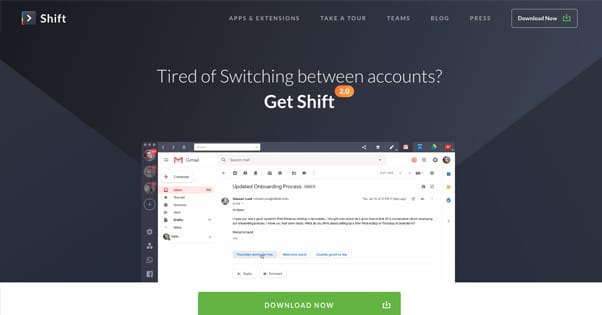
Shift is primarily an engine that allows you to access multiple email accounts at the same time without needing to log out of one and into another repeatedly. If you find yourself managing two or three inboxes – or more – on a daily basis, having an app like Shift can be a massive time-saver. They have native notifications and integration with calendar and Drive as well. It’s designed for Gmail, but it works on any platform where you’re using Google mail.
Campaign Monitor
Campaign Monitor is one of the more robust and corporate-level email management apps. You can create complete email drip campaigns and marketing campaigns from more or less scratch using their editor. You can track customers individually and follow them on their journey through your sales funnel. You can segment your audience intelligently to target them at just the right time, and more.
LiveHive

This app is more of a robust contact management app than just an email manager. It can do group emails and email tracking, with real-time notifications. It can also do campaign design. On top of that, it does voicemail, call recording/transcription/monitoring, contact management, and pipeline tracking. You also get screen sharing, sentiment analysis, sales coaching, and a whole lot more. It integrates with Outlook, Gmail, SalesForce, and other apps to make your business run as smoothly as possible.
Parseur
This app is a text parser that can automatically recognize and extract value from incoming emails and automatically plug it into a source like Google Sheets. It’s ideal for automatic basic tasks that are otherwise quite time consuming. For example, if you have to manage a ton of invoice data, you can set up this app to parse that data and plug it into a spreadsheet with no errors, so long as the email format is static. It might not do much, but if you need what it does, it can save weeks of your life.
Freshmail

This app is a fairly standard email manager. It has the usual template-based designer – these are typical because they’re easy to make and sell – as well as basic email analytics and automatic responses. They also have a bunch of free tools, including a spam test, an inbox inspector, send time optimization, and split testing. Pricing is fairly simple, but it scales based on your subscriber count or per the number of emails you send, depending on which plan you choose. It can be quite expensive under the right circumstances.
YesWare
This one is so popular I had to write an entire post based on alternatives for people who weren’t quite able to use it. The primary benefit of using YesWare is the amount of data it can track about who is opening your emails and when. If that was all it did, it wouldn’t be as popular as it is, though. That’s why it has an advanced automation engine, integrations with a bunch of other apps, and a ton of features for making sales. Since it hooks into both Gmail and Outlook, it works just about anywhere.
DirectMail
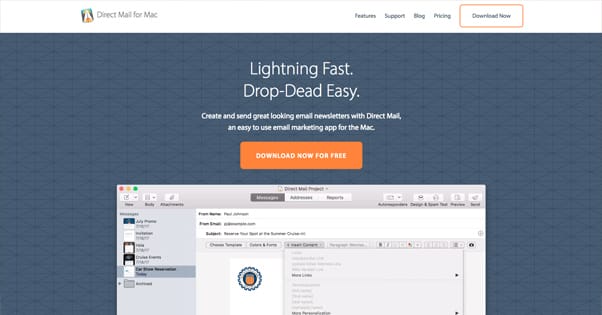
A Mac-only program, oddly enough. As you may have come to expect from the apps on this list, it has a template-based email creator. Interestingly, it includes a built-in image editor, if you need to make some basic tweaks to images for your messages before you send them. It also boasts integration with “hundreds of apps and websites” though it really just uses Zapier for that automation. It’s powerful, but they didn’t do it. On the plus side, you do get real-time analytics, which can be invaluable if you need to respond quickly to changing usage.
Constant Contact
This is one of those apps that you often forget to list just because of how large and well-known it is. Constant Contact is the popular kind of email manager that pays for TV ads. It has robust contact management, tracking users at every stage in your sales process. It’s aimed at being basically the one piece of software you need for your business, and it delivers about as well as any one piece of software can deliver when there are nearly infinite variables to consider.
Boomerang
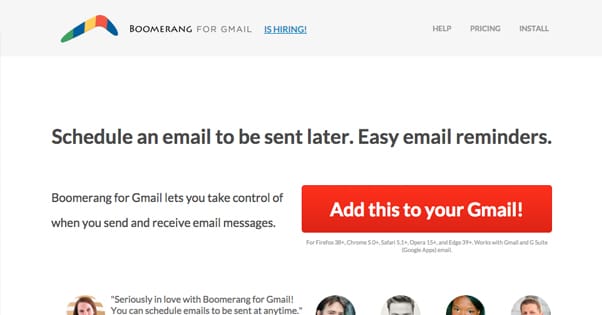
Sometimes you don’t need templates, contact management, or open rate tracking. Sometimes all you want to do is make sure an email sends when you want it to send. Boomerang is a Gmail extension that does exactly that. All you have to do is link it up to a Gmail account and send emails through it. You can schedule when they should be delivered, and it will send them at just the right time to make your schedule a reality. That’s it, that’s the whole thing. Want it? It’s free.
InfusionSoft
Another of the larger apps, InfusionSoft is more of a customer management platform than it is an email manager, it simply include email management as one of its many features. When you look at the features list, it’s surprisingly cheap, though it does boost in costs when you consider the setup fee and the additional pricing for sales pipeline management and e-commerce management.
Klaviyo
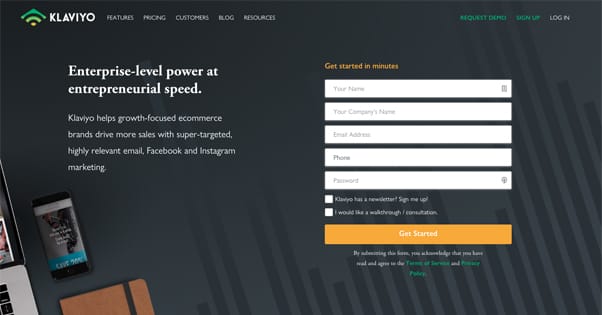
This one is enterprise-level, which you can tell because it has a gray color scheme rather than the white or blue or green that everyone else seems to have. The darker colors are more luxurious and richer, I suppose. In any case, it manages customer interactions and has an emphasis on targeting accurately, including both Facebook and Instagram marketing on top of email marketing.
Taskforce
Not to be confused with Salesforce. Taskforce allows you to “master your inbox” by converting emails into tasks on a to-do list from right inside your client. You no longer need to keep flipping back to your email client or filtering through it only to forget something you needed to do because you archived the wrong email at the wrong time. Build your task tracker, accomplish your tasks, and cycle right back into your email to forward responses as necessary.
FollowUpThen
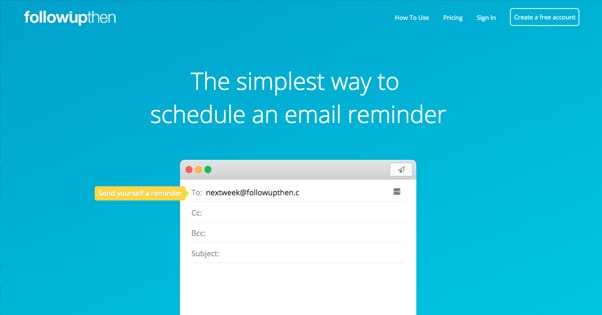
Ever wanted reminders for your email? That’s basically what this app does. When you send a message to a user, client, or potential customer expecting a response, it’s easy to forget who you have and haven’t contacted. BCC this company with the mail and a date, and it will remind you to follow up with the user when that date comes by. It’s also extremely cheap. The most expensive plan is a whopping $10 per month.
MailChimp
No discussion of email management platforms would be complete without mentioning the monkey. MailChimp is one of the most popular management platforms for a very good reason. You can create and manage individual email campaigns and newsletters, drip campaigns, and automation between email and your other company apps. They have templates, of course, and list management that includes contact cleaning for those that bounce. On top of everything, they can help you manage your PPC ads and can hook into your e-commerce apps.
Streak
Streak is a strange beast. It’s a complete email CRM, except it doesn’t require you to use a stand-alone app. Instead, it operates as an extension on Gmail. You can track and assign team workflows based on email communications, with color coding and task assignments, all in that one email window. The only downside is that it’s limited to Gmail; the same thing for Outlook would be pretty sweet.
Front
Front is a shared email inbox aimed at team management. If you have a small team working on the same project, users can connect with each other and have all communications in one central inbox. No longer will you have to figure out which person on the team has which critical email; there’s only one destination where it could be found.
Mail Attender
I’m including this one for the sake of completeness, though I know a lot of my readers aren’t in the target audience for it. Mail Attender is an email manager for Exchange servers. It’s aimed at companies that have IT departments set aside to manage back-end server software and infrastructure, not small startups or individuals with small businesses. As such, it has a ton of great features, complete with legal and regulatory compliance, but it’s also very, very much a corporate-level product.
Do you have a favorite email manager? Feel free to let me know, I’m curious what my readers like to use.


